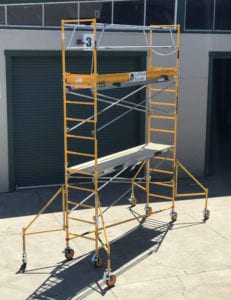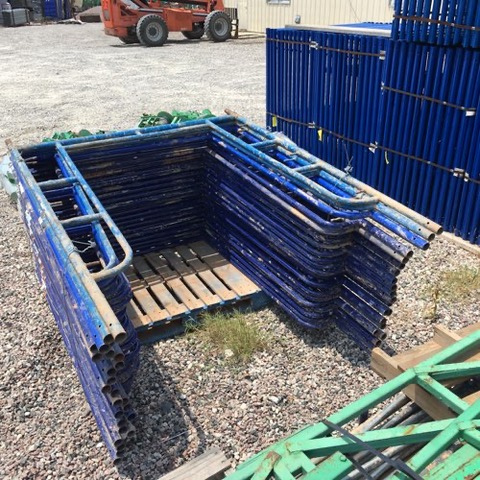Scaffolding Regulations: What You Need to Know
Scaffolding Hoists: Lifting Your Task to New Levels ===================================================
Scaffolding raises maximize material transport, saving time and enhancing efficiency on building and construction websites. They change manual training methods, lowering risks and raising efficiency. Whether electrical or manual, hoists offer different weight abilities and operational rates. Safety measures such as protected add-on factors and harnesses are vital. These hoists streamline operations, assist in height availability, and give cost-efficient remedies for different projects. Correct installment and upkeep warranty continuous operation and stop break downs. Assess costs, guarantees, and safety functions when picking a hoist. Learn more regarding the advantages, kinds, safety measures, and applications of scaffolding raises for your job's success.
Advantages of Scaffolding Raises
Scaffolding lifts offer unparalleled effectiveness and safety when lifting hefty products to elevated building and construction sites. The performance benefits of utilizing scaffolding hoists are evident in the streamlined procedure of transporting products to different degrees of a building and construction website with ease and precision. By employing scaffolding hoists, construction projects can save useful time and increase performance by getting rid of the demand for manual labor-intensive training methods. This not just improves performance however likewise assures that materials are moved promptly and firmly, lowering the risk of crashes or damages throughout transport.
Furthermore, scaffolding hoists add to considerable cost savings by decreasing the labor hours needed for product handling jobs. Making use of hoists minimizes the demand for added workforce, inevitably cutting down on labor expenses. In addition, the exact and regulated movement given by scaffolding raises assists prevent material waste and problems, saving cash on replacement products. Overall, the effectiveness and cost-saving benefits of scaffolding raises make them an indispensable tool for any building project intending to optimize operations and improve safety measures.
Types of Scaffolding Hoists
When taking into consideration kinds of scaffolding lifts, essential variables to evaluate consist of:
- Electric versus guidebook lifts
- Raise weight capability
These distinctions are essential in determining the effectiveness and efficiency of the lifting devices for various task demands.
Understanding the distinctions in between electric and manual hoists, in addition to the weight capability they can sustain, is crucial for choosing the most suitable scaffolding raise for a task.
Electric Vs Handbook Hoists
A crucial factor to consider when selecting a scaffolding hoist is selecting in between an electrical or manual type. Electric hoists are powered by electricity and are known for their effectiveness and convenience of use. They are excellent for tasks that need constant lifting of heavy lots as they minimize manual work and increase performance.
On the various other hand, manual hoists are run by hand and are suitable for smaller sized tasks or tasks that do not need continuous lifting. While manual hoists may be more cost-effective at first, electrical hoists provide benefit and rate, specifically for larger building and construction projects. chimney scaffolding
Inevitably, the choice between electric and manual hoists depends upon the specific needs of the project concerning work and spending plan.
Lift Weight Capacity
One essential element to contemplate when picking a scaffolding hoist is its weight ability, as this determines the type of lots it can safely raise. Recognizing the hoist's weight capability is vital for guaranteeing the safety and security and effectiveness of your project.
Below are 4 key points to consider relating to hoist weight capacity:
Hoist Maintenance: Regular upkeep is essential to assure that the hoist operates at its best capacity and can safely lift the assigned lots.
Weight Distribution: Appropriately spreading out the weight of the lots across the hoist guarantees that it can raise the load without exceeding its capability.
Tons Limitations: Bear in mind the maximum weight ability of the hoist to prevent overloading and prospective mishaps.
Safety Precautions: Constantly follow the supplier's standards and suggestions for the risk-free use the hoist to prevent accidents or damages.
Safety Measures for Scaffolding Lifts
When it comes to safety measures for scaffolding raises, 2 critical points attract attention – making sure protected attachment factors and performing regular safety and security checks.
Secure add-on factors are necessary for the security and reliability of the hoist system, decreasing the threat of crashes or breakdowns.
Routine security checks help to identify any type of possible concerns early on, allowing for punctual maintenance and guaranteeing a risk-free working environment for all involved.
Secure Add-on Details

Guaranteeing the safe attachment points for scaffolding lifts is vital in maintaining a risk-free workplace at raised heights. To achieve this, interest should be paid to particular elements:
Accessory Strength: The attachment factors must be capable of standing up to the weight and forces put in by the hoists and the workers.
Safety Harnesses: Workers must constantly be securely connected to the hoists via dependable safety belt.
Normal Assessments: Routine checks ensure that accessory factors stay strong and trusted.
Proper Installment: Proper installation of attachment factors by qualified experts is important for security and stability.
Routine Security Checks
Regular safety checks are important for preserving the integrity and reliability of scaffolding lifts in building and construction projects. Safety examinations and correct maintenance regimens are vital parts to ensure the risk-free procedure of these training systems. Regular safety and security checks should be carried out by experienced personnel that comprehend the relevance of identifying prospective threats and resolving them immediately.
Furthermore, adherence to training and accreditation requirements is important to ensure that the individuals running the scaffolding hoists are proficient and educated regarding safety procedures. By including these procedures right into normal security checks, construction tasks can mitigate dangers, prevent accidents, and support the highest possible standards of safety on-site.
Appropriate upkeep and detailed safety inspections are essential techniques that contribute to the general success and safety of scaffolding raises in construction settings.
Finest Practices for Running Hoists
Adhering to safety methods and maker standards is essential when running scaffolding hoists on building and construction websites. To ensure the risk-free and effective procedure of hoists, take into consideration the following best methods:
Normal Assessments: Conduct detailed security inspections before each usage to check for any type of indications of deterioration, making sure all elements are in good functioning problem.
Proper Training: Make certain that all operators are adequately learnt the correct operation of the hoists to prevent accidents and injuries.
Weight Restriction Adherence: Constantly adhere to the weight limits specified by the manufacturer to stop overloading, which can bring about equipment failing.
Emergency Treatments: Acquaint all operators with emergency situation shut-off procedures and methods in situation of any kind of unexpected incidents.
Applications of Scaffolding Hoists
To totally utilize the capabilities of scaffolding hoists in construction tasks, recognizing their varied applications is essential. Scaffolding raises deal considerable advantages in enhancing building effectiveness and offering cost-effective options.
By using hoists, building groups can streamline the procedure of delivering materials and devices to different levels of a structure, inevitably conserving time and labor costs. These hoists contribute to forecast performance by assisting in quick and safe product handling, permitting workers to focus on their jobs right away.
Furthermore, scaffolding hoists allow height ease of access, making it easier for workers to get to raised locations securely and effectively. Whether it's moving hefty loads to greater floors or delivering employees to various degrees of a construction website, scaffolding hoists play an essential duty in ensuring smooth procedures.
Selecting the Right Hoist for You
Choosing one of the most appropriate hoist for your construction requirements entails thoughtful consideration of various aspects to assure peak efficiency and performance. When choosing a hoist, right here are four necessary variables to think about:
Installation Refine: Seek hoists that provide simple installment procedures to decrease downtime and guarantee quick configuration for your task.
Maintenance Needs: Think about the maintenance needs of the hoist to ensure smooth procedure throughout the project duration and prevent unexpected malfunctions.
Cost Factors To Consider: Evaluate the preliminary expense of the hoist along with long-lasting expenditures such as repair and maintenance to figure out the most affordable choice for your task.
Guarantee Options: Explore the guarantee packages supplied with the hoist to guard your investment and offer comfort in instance of any type of unpredicted issues. Selecting a hoist with a detailed guarantee can save you from costly repairs in the future.
Regularly Asked Inquiries
Just How Frequently Should Scaffolding Raises Be Examined for Upkeep and Safety And Security Checks?

Routine assessments of scaffolding hoists are critical for upkeep and safety and security. Industry standards advise examinations a minimum of every 1 month. Additionally, making certain that team obtain appropriate security training is vital to protect against accidents and preserve a safe and secure work environment.
Can Scaffolding Lifts Be Made Use Of in Extreme Weather Conditions, Such as High Winds or Heavy Rainfall?
When contemplating the use of scaffolding hoists in severe weather conditions, it is important to focus on wind resistance and rainfall security. Executing emergency situation treatments and safety preventative measures is vital to assure the health of employees and the stability of the tools.
Are There Weight Limitations for the Materials That Can Be Lifted Using Scaffolding Hoists?
Weight constraints are important consider making sure the secure operation of scaffolding raises. Complying with security regulations, these hoists have certain weight restrictions for materials to be raised. Conformity with these guidelines is crucial for a safe and secure work environment.
What Type of Training or Certification Is Called For to Run a Scaffolding Hoist?
To operate a scaffolding hoist, individuals need to go through proper training and certification to guarantee adherence to safety measures. This training covers equipment operation, load capacities, examination methods, and emergency situation procedures. Adherence to these demands is vital for accident avoidance.
Exist Any Type Of Specific Rules or Standards That Required to Be Followed When Utilizing Scaffolding Lifts on Construction Websites?
Laws compliance is essential when using scaffolding raises on construction sites. Adherence to safety preventative measures outlined by pertinent authorities is required to ensure a safe and secure workplace. Normal inspections, proper training, and complying with guidelines are essential components.
Verdict
To summarize, scaffolding lifts offer countless advantages for raising jobs to new elevations. By recognizing the numerous types of hoists available, carrying out safety measures, complying with finest practices, and selecting the ideal hoist for the job, construction and maintenance jobs can be finished more effectively and safely.
Making use of scaffolding hoists can boost productivity and assurance that projects are completed with precision and accuracy.